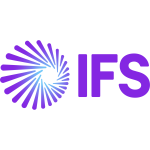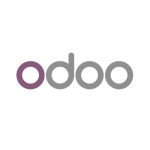What is our primary use case?
We use this solution to review processes the parent company implements in China. Extra configurations on the system are included based on optimization proposals, and we can optimize the functions to the requirements. In addition, I work as a certified MM consultant and have access to minimal usability functions.
What is most valuable?
A valuable feature is the application of customer feedback to improve the system by the retailer. Millions of dollars have been saved doing this. Improvements relating to costing structures can be made, and the system usability from on-premise to cloud and the terabytes and gigabytes required in the system have dramatically reduced. An example is working in the MM area with the system. Only a simple vendor had master data and many tables. From 40, the SAP on the cloud or the HANA version has reduced it to two tables. So it's a significant decrease still growing. By applying customer feedback, they have improved as retailers of their products.
What needs improvement?
We have never had a bad experience with this solution, except for how the system is over-customized. When customizing, it bypasses the standard protocols, and SAP is not a very dynamic system. It's static, and rules drive it. So when the system does not allow the creation of custom codes to bypass protocols, it becomes slightly offsetting because the system no longer functions as an SAP system. This information is based on the current features provided at our company.
Additionally, we would love more integration with the functions we need. For example, the core SAP is minimal. It runs basic things, but we would like the inclusion of contract management and warehouse management in the deployed standard releases and not as add-ons. The add-ons are costly, and companies don't want to purchase them. However, if the add-ons were free, it would be great.
For how long have I used the solution?
We have been using this solution for about 28 years. We use the ECCC enhancement package seven.
What do I think about the stability of the solution?
The solution is stable. For example, you'll have issues if you don't do your patches regularly in other software. However, for this solution, the production environment is very stable.
What do I think about the scalability of the solution?
The solution is scalable. We can add users to the system without issues, but getting them loaded on the system requires approval. When you load a user on SAP and understand what the user is supposed to do, it takes you about five minutes to load the user. Currently, we have about 638 users on the system, and about 60% are active users. Currently, we have about 638 users in different roles on the system.
How are customer service and support?
I rate my experience with customer service and support as excellent. The one time we reached out to them for issues, they were efficient in their responses and response time.
How was the initial setup?
The implementation is very straightforward when implemented directly with the right team. However, if you are migrating from another system, the implementation is more difficult because you have many compatibilities, and the deployment timeline varies. For example, in one of the companies I previously worked at, we started in 2004 and ended in 2008, but other issues elongated the process. As a result, we did the complete handover in 2008. At another company, we began in 2014 and ended in 2016. However, they were already using the system, but it wasn't fully deployed until 2016, as the modules were completed based on business requirements.
What's my experience with pricing, setup cost, and licensing?
From my perspective, when you deploy it, the SAP instantly comes with several users and a pre-given user license. Each additional user added charges differently, and additional license fees are applied. Regarding HANA, there is a split in finance core asset management, inventory management, and supply chain, and they have buckets with the ERP on the previous version. There can also be add-ons. However, the standard things required by the business must be structured together and not charged as stand-alone as they are now with the HANA cloud versions.
Currently, the estimate for the license per user is between 20,000 to 40,000 USD. Although I am unsure of the exact number it costs in that range, every time I request a new user, I have to justify the need to my company because they claim it falls in that range per user license.
Which other solutions did I evaluate?
We chose this solution because of its stability, and the system offered everything we wanted. In my company, I primarily research IFS, and this solution was the first time I heard of IFS and SAP because they met all our work requirements. Since we work in mines, we use different systems like geology, metal and accounting, and they need to integrate with SAP, and SAP is very flexible for that.
What other advice do I have?
I rate this solution a ten out of ten. I'll advise individuals who want to use this solution for the first time to ensure they get the right team to implement it. It might be expensive, but I'll advise them to use the SAP team because SAP regularly deploys the best staff. The experience throughout the project is super. Most times, end users get disappointed in system performance or the scalability of the system function because of the implementers. Once you have a good team and project manager, you can meet timelines and deliverables and have a smooth implementation process. It takes under six months to implement SAP fully with the right team. This solution is good but can improve by including more integration functions in the next release.
Disclosure: My company has a business relationship with this vendor other than being a customer. Partner














